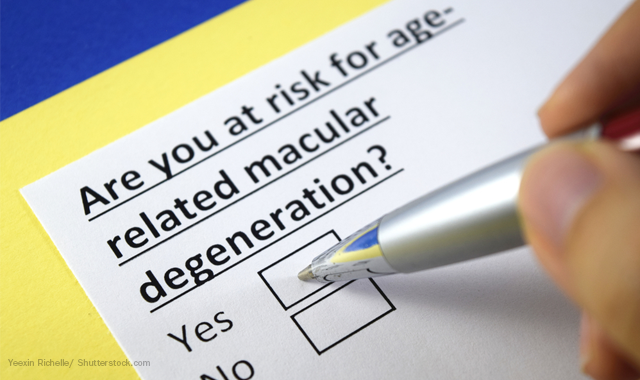Does periodontal disease cause eye problems? It’s complicated
There seems to be some sort of link between periodontal disease and macular degeneration, but just how strong is it?

It may sound strange for problems with two very different systems, the eyes and the mouth, to be connected, but depending on who you ask, periodontal disease (PD) could have a huge impact on the development of age-related macular degeneration (AMD) - or not much of one at all.
Certainly, there is already a mountain of evidence showing that PD can cause a slew of other problems in the body. The bacteria responsible for periodontitis have been linked to several different types of cancer - of the stomach, esophageal and gallbladder - and also to other problems like frailty in the elderly and prostate issues. It’s not a stretch to imagine that one other system could be affected.
Related article: Is wine a good mouthwash?
That’s the conclusion that one American team reached in a 2015 study examining a link between PD and AMD. In that study, the team researched 8,208 adults from the National Health and Nutrition Examination Survey III. In that population, a total of 52.30 percent had PD, and 11.45 percent had AMD. For patients younger than 60, after taking a variety of other variables out of play, those with PD were nearly twice as likely to develop AMD.
Seems like an open-and-shut case then, right? Not so fast. That study, along with other smaller studies performed in Poland and Finland, were performed among largely a Caucasian population. Another more recent 2017 study conducted in Korea had results that weren’t quite so one-sided.

In that study, examining a large population of 13,072 adults, 37.4 percent had PD while and 5.6 had AMD. The study found that, overall, there is no significant link between having PD and AMD - except in one section of the cohort. Adults between 40 and 62 with severe PD were 1.61 more likely to develop AMD than those who were older or had only mild PD.
So what does this all mean? Clearly, there’s at least some sort of link between PD and AMD, but who exactly that link affects is up for debate. The next logical step, then, is determine what the possible cause could be.
A recent study examining the effects of PD bacteria on retinas may have the answer. First, researchers isolated one of the primary bacteria responsible for causing PD, Porphyromonas gingivalis (Pg) and infected human retinal cells with those bacteria directly. The retinal cells took up the Pg, and exhibited markers of infection. In the second part of that study, researchers injected mice with that same bacterium, and those mice that were injected showed higher levels of AMD.
Related article: How scientists are turning teeth into drugs
Dr. Pachiappan Arjunan, assistant professor at the Department of Periodontics at the Dental College of Georgia, Augusta University, says “This is the first study to demonstrate the link between oral pathobiont infection and AMD pathogenesis and that Pg can invade human retinal-pigment epithelial cells and elevate AMD-related genes which might be the target molecules for both diseases."
More research is needed - after all, mice aren’t humans and retinal cells are the same as a living, breathing human - but there’s clearly something here. There’s no need to panic yet, but it’s just one more really good reason to keep your patients healthy.